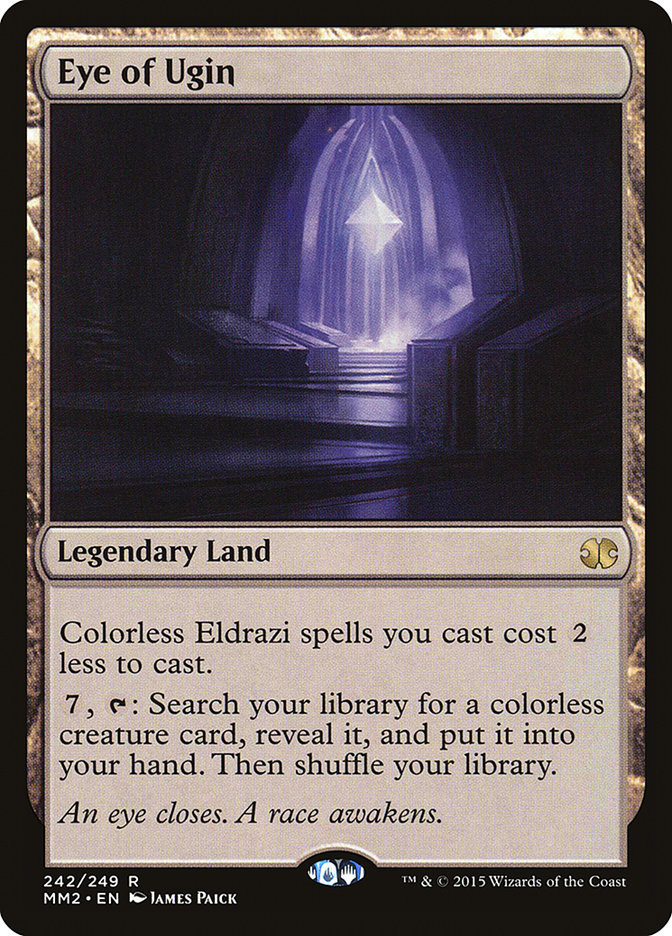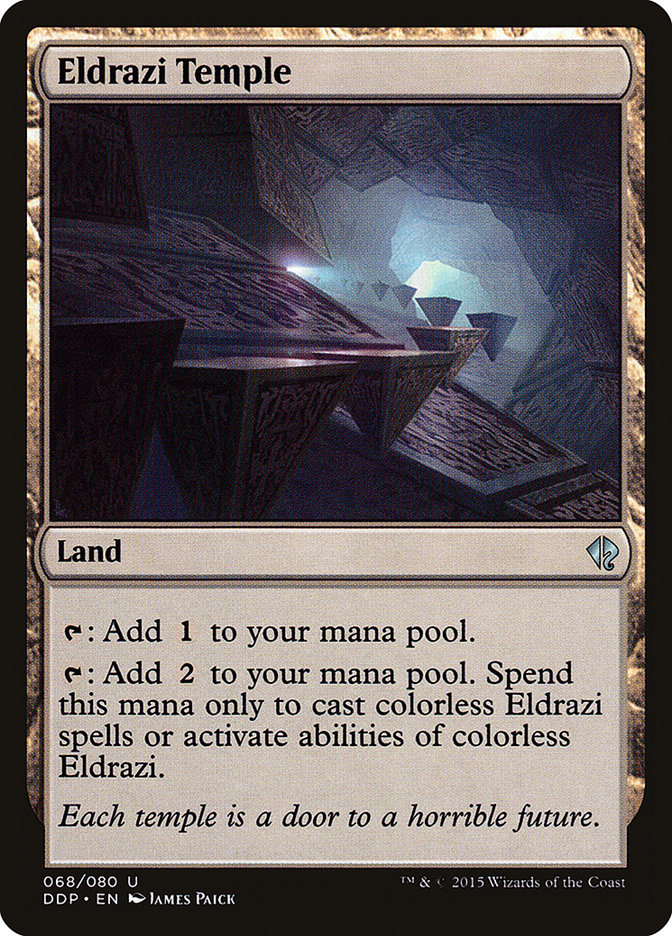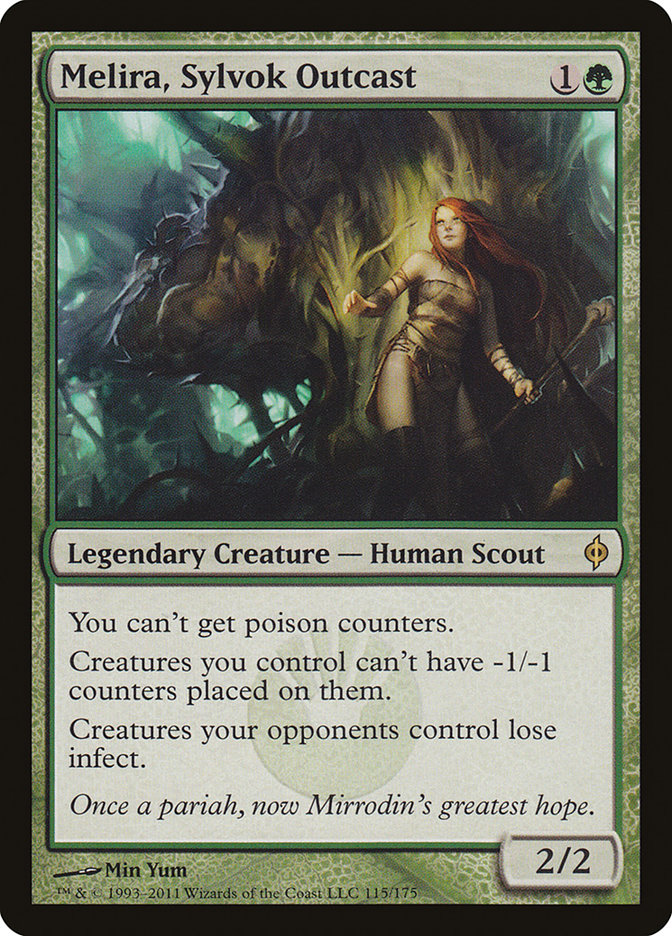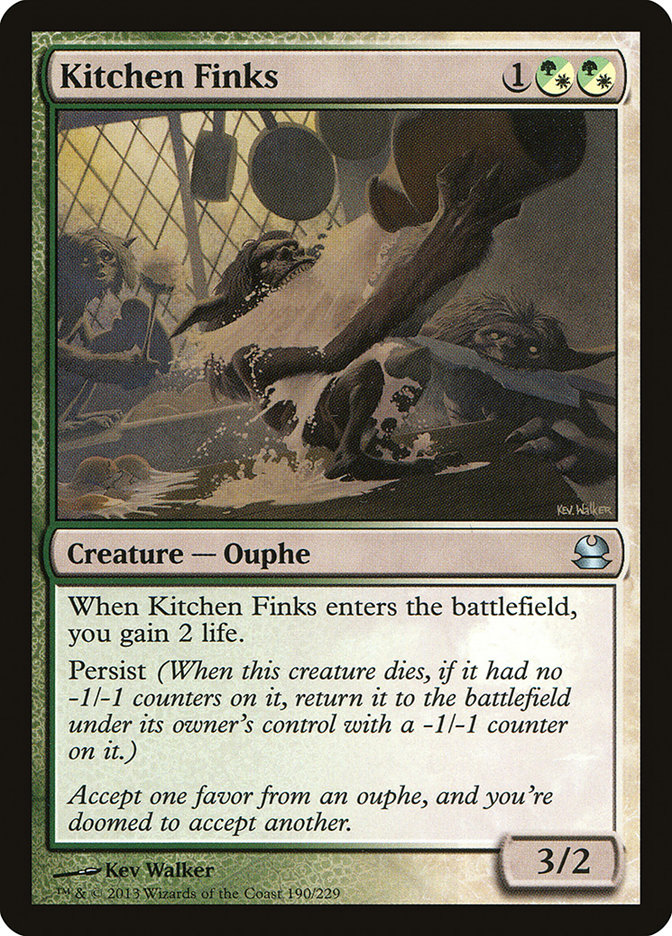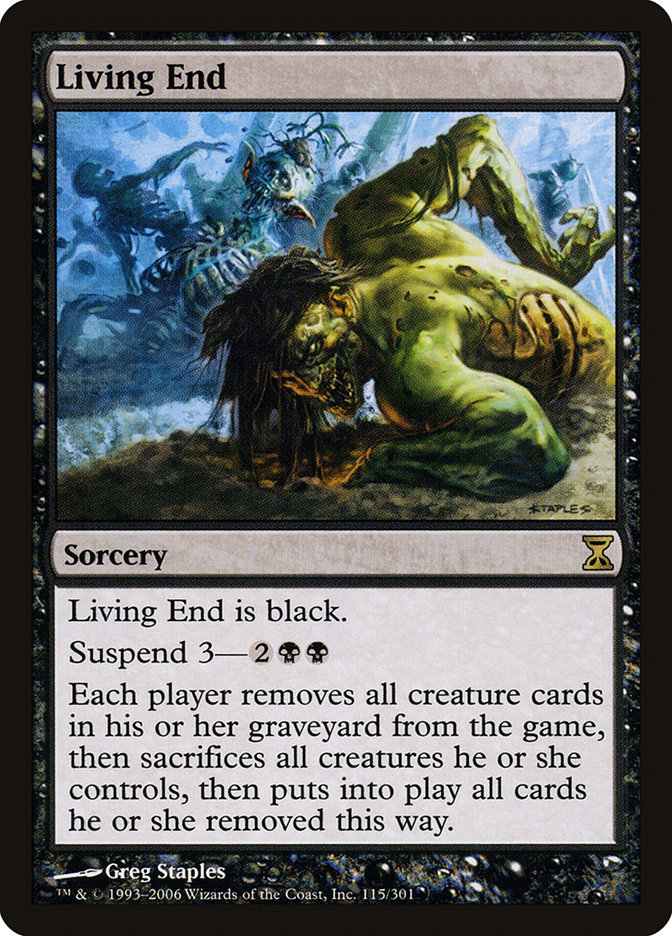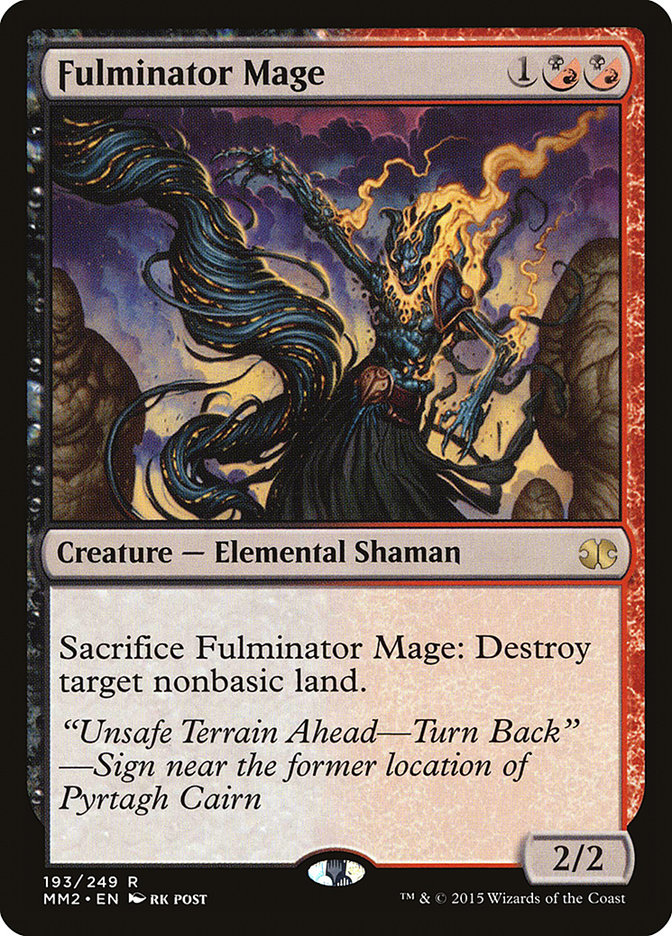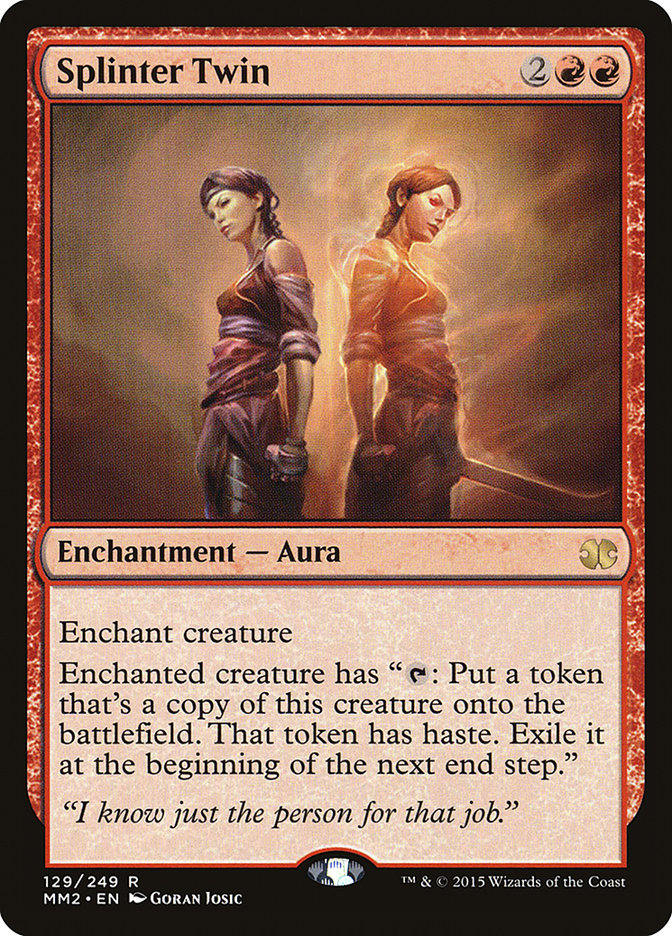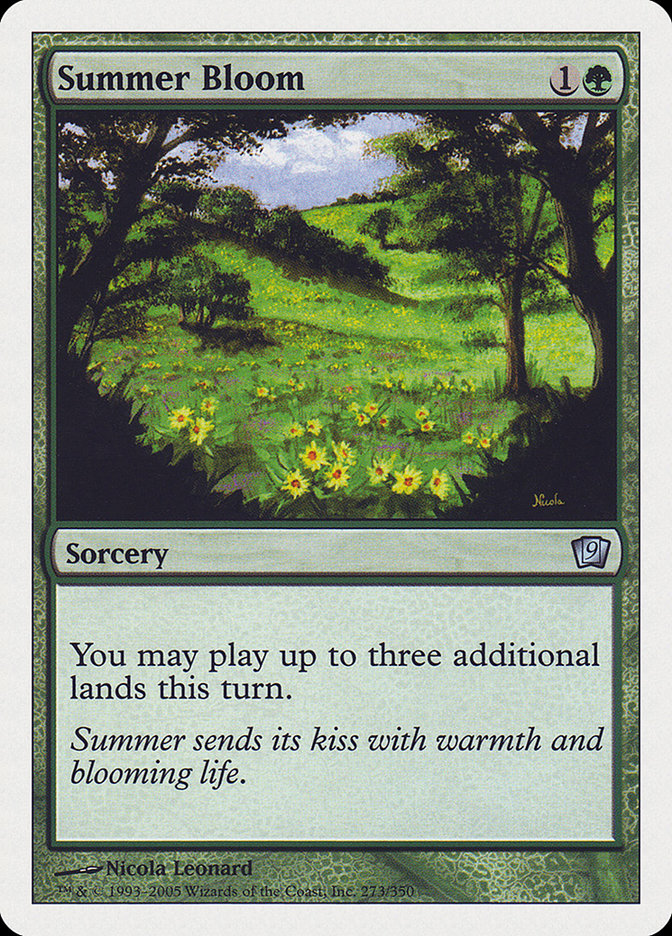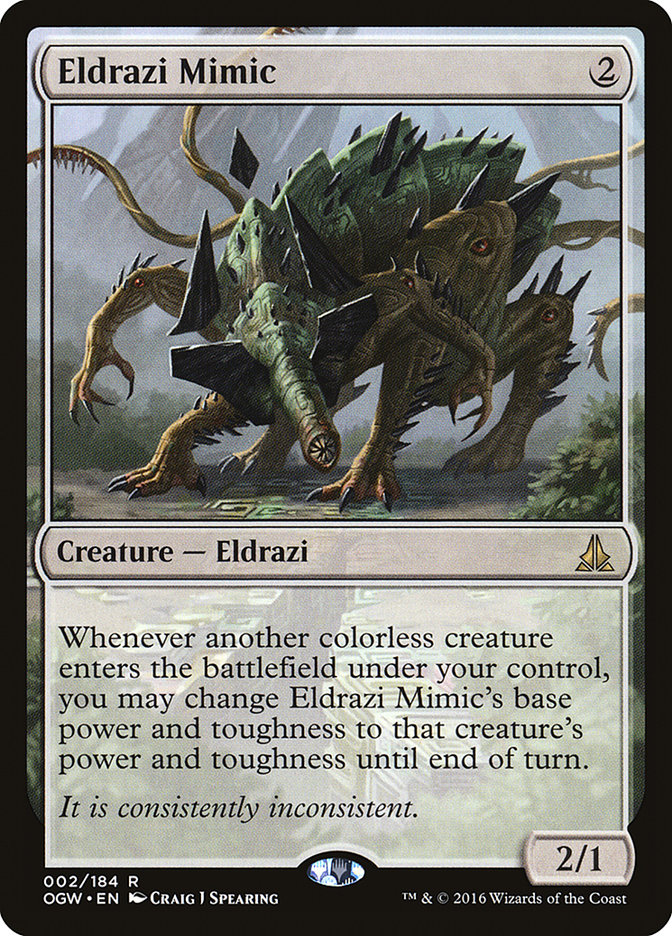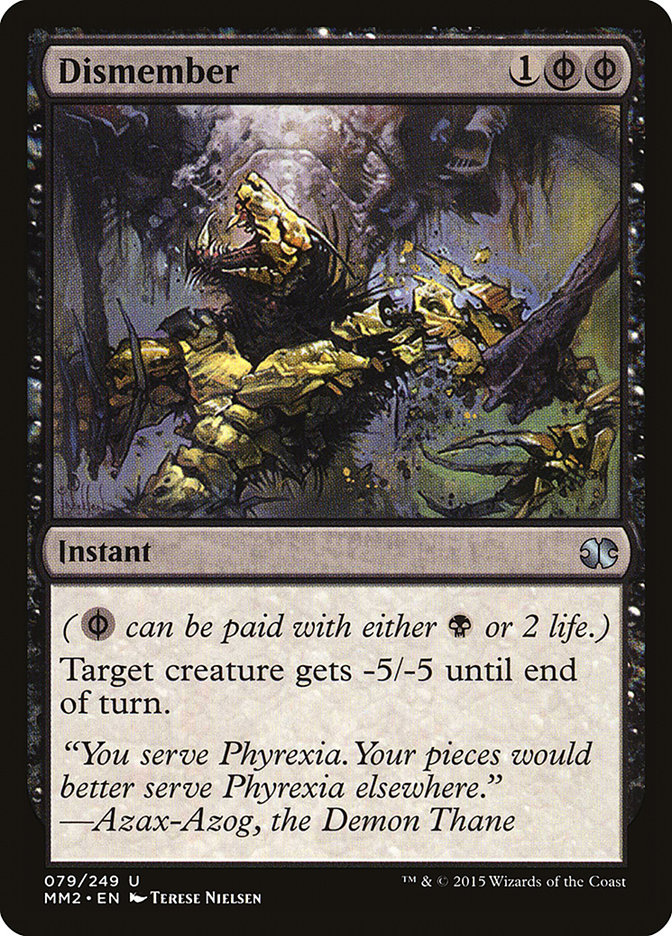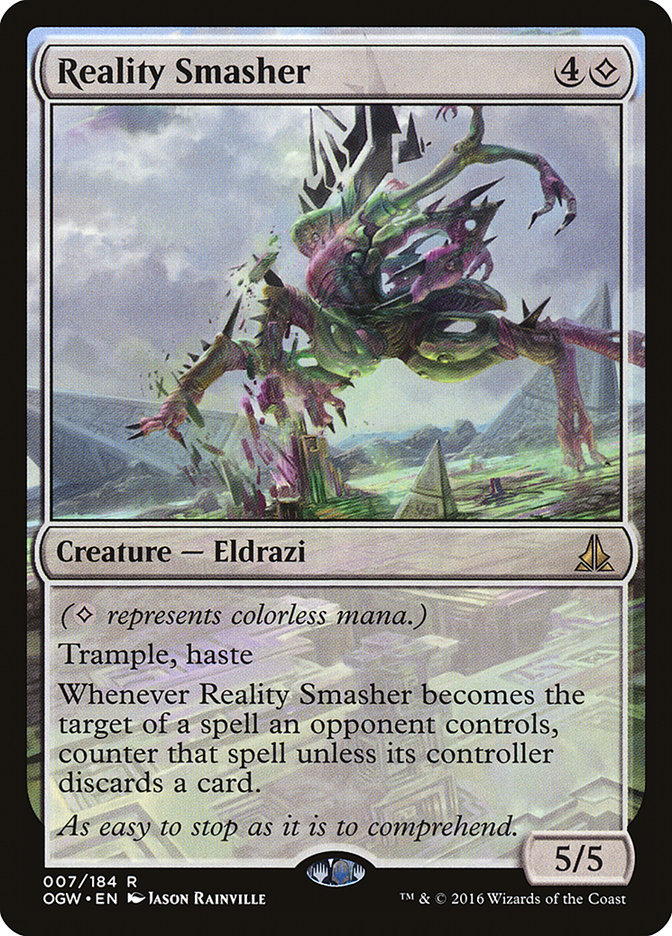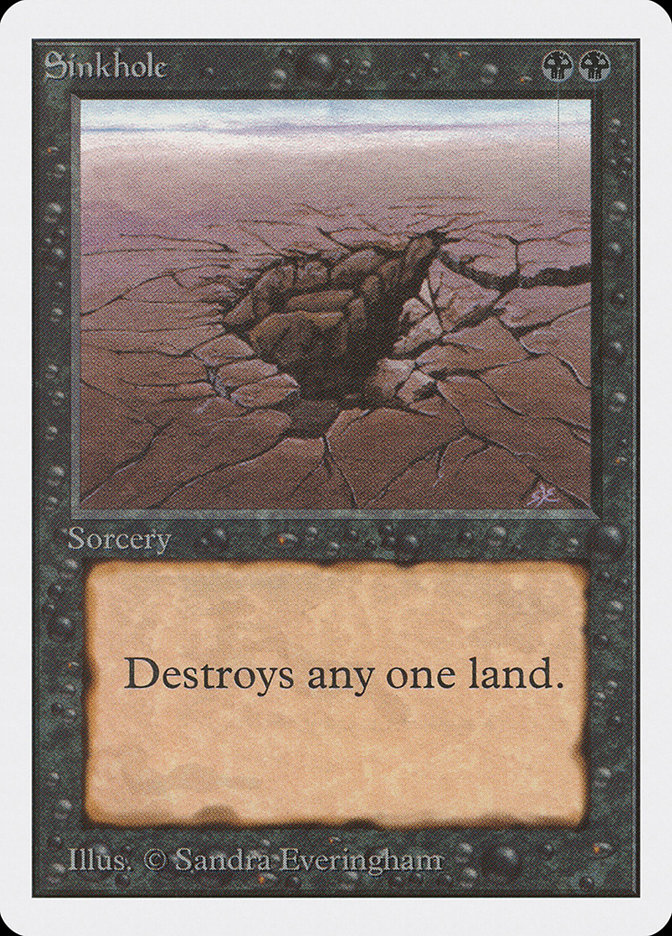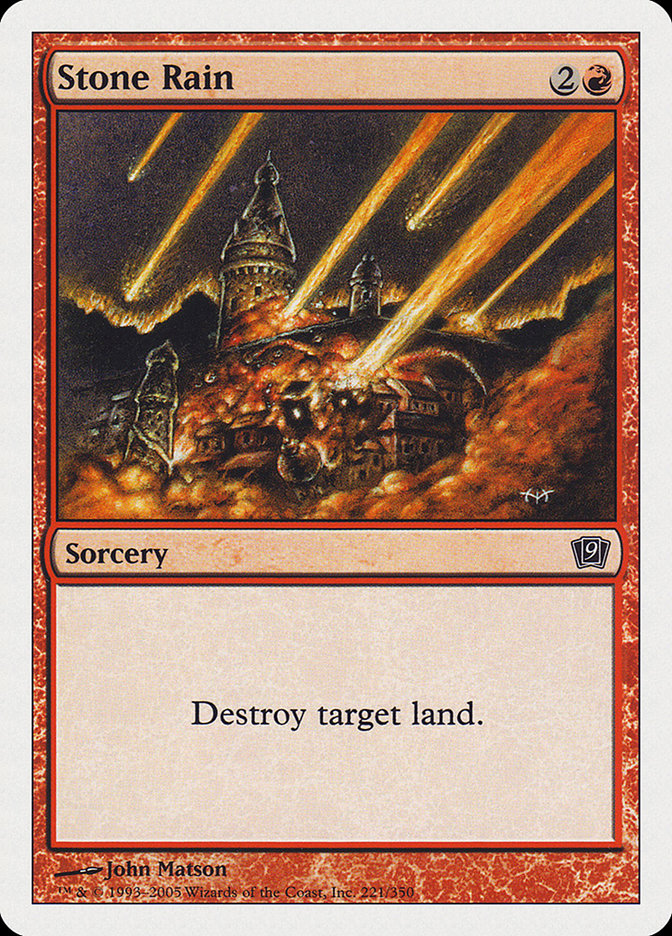It’s a pretty simple question, really.
Eldrazi made such an impact on Modern that “the deciders” in Wizards of the Coast took notice. At this point, the question isn’t whether something gets banned, but what?
After Pro Tour Oath of the Gatewatch, it was clear that the Eldrazi were a force to be reckoned with, and there was clamoring for a near-immediate ban of something, anything to make the deck go away.
Even at the time, I definitely felt like this was premature. Yes, we had a hugely significant data point surrounding the deck after the Pro Tour, but we’ve seen things like this not really pan out in the wider world.
Pre-Pro Tour Prep
The reason is basically pretty simple.
Pro Tour preparation is usually greatly imperfect. This is even moreso the case when you’re talking about a format as large as Modern. There are simply too many decks to really be able to get a sense of things as perfectly as you would in a format like Standard.
Imagine you’re exploring a format, and you discover that there are, for the sake of argument, four decks at a “Tier 1” level (with one deck really standing out) and three decks that seem like reasonable “Tier 2” decks. If you just want to get a sense of the very best decks, you could easily take care of this by playing all of the Tier 1 decks against each other (six matchups), and then one or two of your favorite Tier 1 decks against all of the Tier 2 decks (three or six more matchups). If you want to go crazy, you could even test them all (21 matchups).
It doesn’t take much for that to explode, though.
Imagine: it is just before Pro Tour Oath of the Gatewatch, and you’re looking at nine or ten potential Tier 1 decks, with probably six or more reasonable Tier 2 decks. And, of course, this is without reckoning with the fact that the world isn’t just changing from a new set, but from a potent banning choice by Wizards. Just testing the Tier 1 decks in this example means testing 36 matchups.
That doesn’t even count brewing new decks, or testing Tier 2 decks.
With a large enough team, this work is doable in the few short weeks between a set’s spoiler release and the actual main event. But, even with those teams, I can tell you from experience that shortcuts are taken.
There’s nothing wrong with this. You play a deck, say, Abzan Company, and you just don’t like the feel of it. Two or three other people on the team are really feeling the deck, and you let them do the heavy lifting on it, confident that, if they discover what the deck is doing that works at its core, they’ll share their findings with you. Eventually, you start to hone in on what you think is reasonable. With any luck, the fringes of the format can get explored by various members of your group; the likelihood is that fringe ideas will end up not making it, but some may.
I say it is very hard to properly test for a format like Modern when it becomes new. “Properly,” in this context, is a funny word. What I mean by it is that inevitably the testing you’re going to do, even with a large group, is going to require shortcuts, and probably a lot of them. This is normal and reasonable, but it also does affect things like just how much confidence you can have in having explored a format.
Eldrazi in the Modern World
Going back to Eldrazi in Modern, it is significant to note just how many teams essentially missed the Eldrazi decks that existed.
Even more to the point, basically everyone missed the best builds of the deck. Here is the Pro Tour-winning list from #PTOGW in Atlanta:
Creatures (33)
- 4 Drowner of Hope
- 4 Endless One
- 4 Eldrazi Skyspawner
- 2 Ruination Guide
- 4 Vile Aggregate
- 4 Eldrazi Mimic
- 3 Eldrazi Obligator
- 4 Reality Smasher
- 4 Thought-Knot Seer
Lands (24)
Spells (3)

While winning a Pro Tour isn’t specific evidence that you have the best deck in a room, it is an argument for it (these days, the mixed-format Pro Tour really mucks with the idea that the winner had the best deck).
The Top 8 was chock-full of Eldrazi lists. None of those lists, however, were reminiscent of this:
Creatures (28)
- 4 Drowner of Hope
- 4 Endless One
- 4 Eldrazi Skyspawner
- 4 Eldrazi Mimic
- 4 Eldrazi Displacer
- 4 Reality Smasher
- 4 Thought-Knot Seer
Lands (25)
Spells (7)
Sideboard

Andrew Tenjum’s build of the deck was essentially revolutionary for the macro-archetype of Eldrazi. It was just a better Eldrazi build against most any build of Eldrazi and quickly became the default build for the deck. And yet, despite this dominance after the fact, it didn’t have a significant presence at the Pro Tour.
Weeks later, Gerry Thompson would Top 8 Grand Prix Detroit with his update to Tenjum’s list, an update which is basically the gentlest of nudges:
Creatures (28)
- 4 Drowner of Hope
- 4 Endless One
- 4 Eldrazi Skyspawner
- 4 Eldrazi Mimic
- 4 Eldrazi Displacer
- 4 Reality Smasher
- 4 Thought-Knot Seer
Lands (25)
Spells (7)

His changes?
Remove a Path to Exile and replace it with a Dismember.
Especially in a world where Eye of Ugin activating can really matter, this makes a ton of sense.
In Detroit, there were four U/W Eldrazi decks in the Top 8. In Melbourne that same day, two U/W Eldrazi pilots met in the finals. In Bologna, there were three U/W Eldrazi decks in the Top 8, and, like in Melbourne, two met in the finals.
Before that weekend, I was withholding judgment because we hadn’t seen what would happen to the metagame on a grand scale once people had a deck in their sights and were taking aim. Perhaps, like so many times before, what would happen is that the top decks would simply be absorbed into a greater metagame.
In this case, it was more that the top decks just got honed to an even more razor-sharp edge.
Yes, there were decks that could arguably face them. Arguments have been made that this is the case for Abzan Company and for Living End. By the end of the format, I even felt good about how my strange little brew performed against the deck. But none of that changes how the format wasn’t able to respond to Eldrazi in Modern in any meaningful way.
Now, there will be some cries about how Splinter Twin and Summer Bloom would have made things better. This isn’t something I can take credibly. Both of those decks didn’t just require answers, but they required a narrow set of answers, and required them to be sequenced perfectly. The issue, to me, was that because Deceiver Exarch would tap down a mana on a turn before you were planning on making a combo, you were so horribly hobbled in your choices to answer the deck that you couldn’t really make any creative set of decisions. At least with Eldrazi, you just needed to have a way to handle creatures, period. Yes, they were still too good, but they didn’t shut off your ability to make tactical choices.
Whatever your opinion on that matter, the fact remains that we are, for now, living in a Modern where Eldrazi are the masters and overlords.
In my prep leading into Grand Prix Detroit, Steve Moerke, one of my teammates for Pro Tour Oath of the Gatewatch, had been putting a lot of work in with G/R Eldrazi. He and his friend Frank had put in a ton of work in the deck, and it seemed like it did pretty well against U/W Eldrazi. With a great deal more testing, though, it seemed more like it did “fine” against U/W Eldrazi, much like nearly every deck that was honed to beat the villain of the format. And, in the case of G/R Eldrazi, this was a bit like Hordak taking out Skeletor; sure, you’re taking out the villain, but it is a villain doing the work.
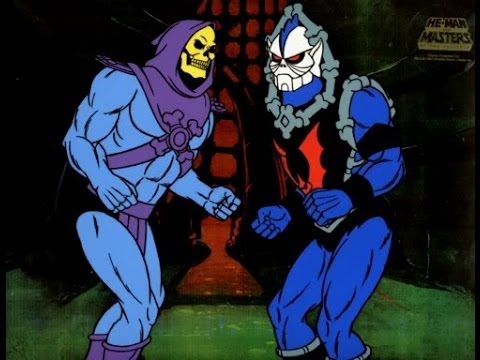
Whomever is doing the work, we are basically in this place: the decks that are most suited to “beating” U/W Eldrazi seem to be doing so at a rate just above 50/50, especially when a truly talented U/W Eldrazi pilot is at the helm.
Something is going to be done. But what?
The Case for Eye of Ugin
One of the most common cases I’ve seen advocated is to remove Eye of Ugin.
The appeal to this makes a lot of sense. The most busted draws often end up looking something like this:
That is without even dealing with the absurdity of:
These draws can be so oppressive, it can be as gumption-destroying to play against these draws as it is to work on an article or a paper for a class and find out that it somehow had not been backed up when your computer crashes. If you’ve ever been on the receiving end of these draws, especially if it is backed up by Eldrazi Temple, you can know how horrible (and yet somehow awe-inspiring) this feels.
The truly absurd draws are the draws that have an Eye of Ugin. There can be incredible draws that don’t involve Eye, but when things go bonkers, an Eye is usually involved.
In addition to the absurd games that happen in early stages of the game, Eye of Ugin opens the door to late-game grinds that are very hard for nearly any deck to overcome. You can be in a position versus Eldrazi where you know that, if they draw a single mana, the game will rapidly start turning into an avalanche. This is one of the reasons that I love Gerry Thompson’s take on U/W Eldrazi: swapping out the fourth Path to Exile for the fourth Dismember is a great concession to the pressures of living in an Eye of Ugin world.
Since it can be a real problem, both in terms of the ability to be an explosive deck and the ability to let you basically outgrind most opponents, there is a real call to take out the Eye.
Of course, there is another side.
The Case for Eldrazi Temple
One of the things that really holds back Eye of Ugin from being an utter terror is that it is legendary. Just this in and of itself is a self-limiting factor. If you’ve played with Eldrazi, you can know that feeling of being “Eye-flooded,” where you really need to draw a land of nearly any kind; it just has to not be Eye of Ugin.
Eldrazi Temple powers up Eldrazi without this limitation. As a result, if you ended up banning Eldrazi Temple, you’d still have an Eldrazi deck that had some power, but it would be self-hindered by the simple nature of what Eye of Ugin can do.
The example “absurd” draw of Eye of Ugin into Eldrazi Mimic into threatening cards is actually a lot tamer if you’re not following up with an Eldrazi Temple. Eye of Ugin might be the card that lets you deploy several Mimics early, but it is Eldrazi Temple that actually sets up the turn 2 Thought-Knot Seer, and those draws do feel particularly oppressive, as well.
Without Temple, even the runaway Reality Smasher draws are just a lot less common. This means that the “meat” of the deck that makes up the so-called middle game of the Eldrazi decks takes a much bigger hit. If you’re wanting to be the Eldrazi deck working without Eldrazi Temple, the common fast draws no longer hit as hard or happen as consistently. They still happen, but only at the risk of the legend rule making things potentially hard on you.
I’ve seen Eldrazi lists, whether right or wrong to do so, which have shaved into Eye of Ugin, but I haven’t seen a single list do so to Eldrazi Temple. While the merit of doing so can be argued, it does imply that there is at least an argument to be made that Eye of Ugin is less indispensable, and thus, letting it stick around would be the right thing to do.
Finally, there is the argument that if you ban Eye of Ugin, you’re gouging out a huge portion of the Tron deck. If you think Tron is worth keeping around, you’d probably support a ban on Temple over Eye.
The Case for Both
Let’s scorch the earth.
The argument here is that the Eldrazi are so offensive to Magic that they just need to go, period. Get rid of Eye, get rid of Temple, and shrug your shoulders to the Tron players who happen to get caught in the explosion. Anything to get rid of this otherworldly menace.
There is some real merit to this idea, as extreme as it sounds. Eldrazi decks are incredibly good at pushing midrange decks of all stripes out of the format. If you’re trying to “play fair” with your reasonable spells, it is pretty easy to get pushed around by the under-costed cards powered out by any variety of double-mana land you like. A world with Eldrazi is likely a world where Jund, Grixis, Abzan, and a number of other decks are simply never going to be able to make it. It probably is also a world where Burn isn’t able to live either.
I don’t support it, but I can be sympathetic to the concept that a world without Burn isn’t the world we want to live in, and we should just ban and ban until Burn is fine.
My Take
I’m only ever so slightly leaning this way, but I think the card to ban is probably Eye of Ugin.
Yes, poor Tron will get hurt. But, I’m willing to take some wind out of Tron. This will likely open up more space for decks playing Cryptic Command.
What I like is taking away the potential for explosive starts and long grinds, all in one fell swoop. This still leaves a core for an Eldrazi deck to exist, but you can fight it much more fairly than otherwise, and you cease to have to worry about casting Path to Exile being game-ending. Instead a card like Path to Exile becomes potentially a liability, but then, it was always meant to be.
That’s my take.
What’s yours?


